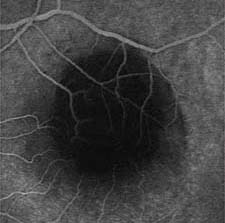PDT effective in Italian trial
The VIT trial showed photodynamic therapy to be the first line of treatment of choroidal new vessels in AMD.
ROME — An Italian clinical trial of photodynamic therapy with verteporfin has given encouraging results at 1 year, which are substantially in line with those of international multicenter studies. The study further served to heighten national awareness of PDT.
“The VIT project, which was aimed at an exclusively Italian environment, had the great merit of making photodynamic therapy known to specialists, the public and the media at a time when PDT was rarely being performed. The 10 centers that participated in this study were in fact scattered throughout the country, from north to south, including Sicily,” said VIT study coordinator Nicola Orzalesi, MD, speaking at the meeting of the Italian Ophthalmologic Society.
The VIT (Verteporfin in Italy) was a multicenter, open study, involving 200 patients with 12 months of follow-up. The results are now being analyzed by Novartis Ophthalmics in Switzerland and will be published by the end of this year.
|
|
Comparable results
Inclusion criteria were based on the results of the Treatment of AMD with Photodynamic Therapy (TAP) study: “Patients with predominantly classic lesions of 5,400 µm or less, and visual acuity between 20/40 and 20/100,” said Prof. Orzalesi, head of the University of Milan Eye Clinic at San Paolo Hospital.
In the 12 months after treatment, a decrease in the mean lesion size and lessening of retinal fluid could be seen in all patients, Prof. Orzalesi said.
“A slight visual decrease was also observed in some patients, but this is to be considered as normal,” meaning this loss could be expected in the natural course of the disease, Prof. Orzalesi said. “We shouldn’t forget that the goal of PDT is not recovery, but stabilization or slower progression of the disease. As long as visual loss is lesser than it would have been under untreated conditions, we should consider this as a success of the therapy.”
A significant visual decrease of more than four lines immediately following PDT treatment is a rare adverse event, as confirmed by Prof. Orzalesi.
“In only 0.8% of our patients did there occur a significant, irreversible visual loss in connection with the treatment,” he said.
The re-treatment rate was also in line with the TAP and other verteporfin trials.
“The majority of patients were treated every 3 months in the first year. Studies on different schemes of treatment at shorter intervals are ongoing,” he noted.
A better quality of vision
Personally, Prof. Orzalesi considers PDT as a valuable means for treating wet or exudative forms of age-related macular degeneration.
“As long as patients don’t expect complete recovery, we can offer them reasonably good results in terms of vision. In some cases there might even be a gain of visual lines, but in the majority of cases we can realistically expect a slower onset of visual loss. At 2 years, on average, visual acuity is better in treated than untreated patients,” he said.
Improvement should instead be considered in terms of visual quality.
“Patients might have no visual acuity improvement, but often they can see better, with far less visual distortion,” he added.
Long-term results of PDT cannot yet be predicted.
“So far, we can only say that for 2 to 3 years patients have experienced some kind of improvement, and this is a significant period of time for older patients,” he said.
Reimbursement
For 2 years the Italian government, through a special fund allocated for innovative therapies, provided direct financial support for PDT treatment in AMD and degenerative myopia.
“The treatment was fully reimbursed by the National Health Service, provided it was performed in specialized centers and according to protocol issued by the Ministry of Health Care,” Prof. Orzalesi said.
More recently, verteporfin has been dropped from the innovative therapies program and has been registered as a class H drug, reimbursable by the single hospital units where the treatment is performed following the protocols of the TAP and VIT studies.
“This creates some problems, as most Italian hospitals have considerable budget restrictions,” Prof. Orzalesi said. “New solutions should be sought, bearing in mind that the incidence and social costs of age realted macular degeneration are likely to increase with the longer life expectancies of today.”
For Your Information:
- Nicola Orzalesi, MD, can be reached at Ospedale San Paolo, Clinica Oculistica, Università di Milano, Milan, Italy; +(39) 028-184-4401; fax: +(39) 028-139-221, e-mail: nicola.orzalesi@unimi.it. Prof. Orzalesi has no direct financial interest in the products mentioned in this article, nor is he a paid consultant for any companies mentioned.
- Novartis Ophthalmics, distributor of Visudyne, can be reached at 11695 Johns Creek Parkway, Duluth, GA 30097 U.S.A.; +(1) 770-905-1000; fax: +(1) 770-905-1883. Visudyne is a trademark of Novartis AG.


